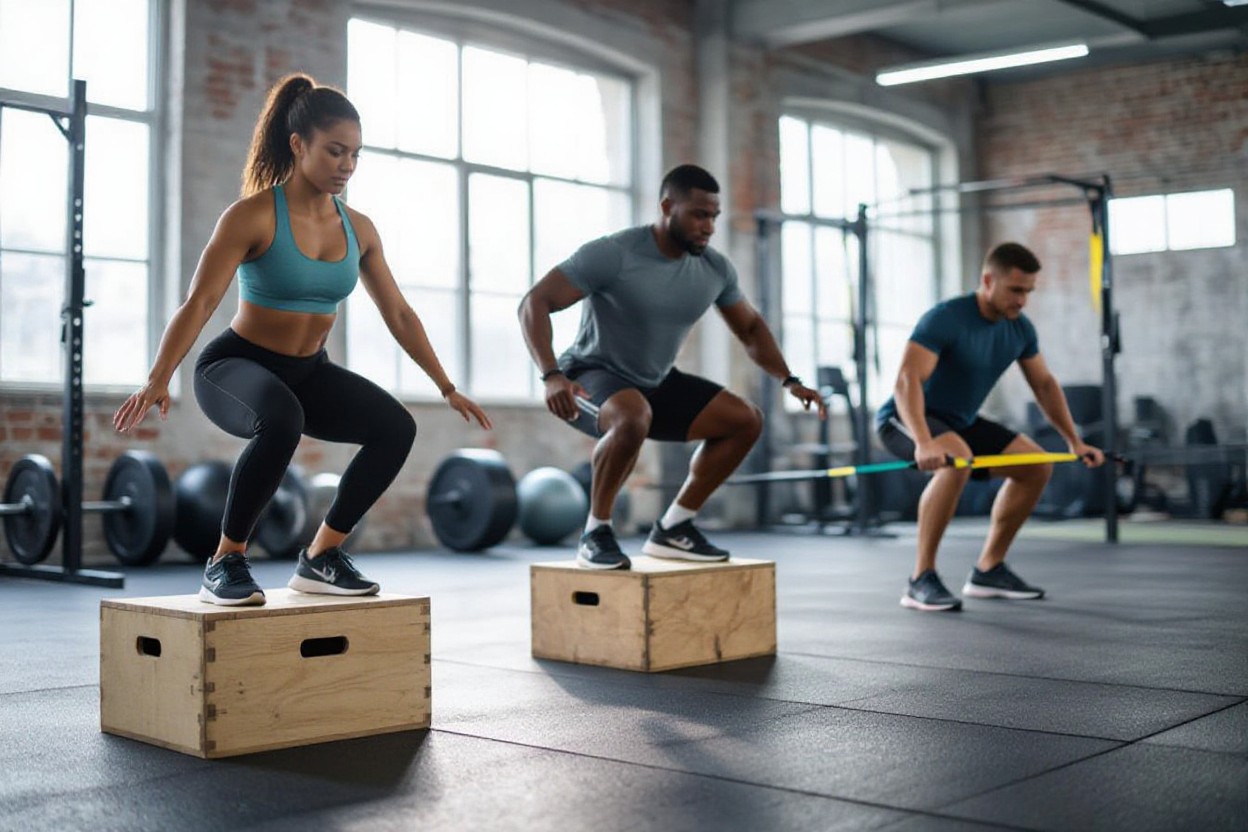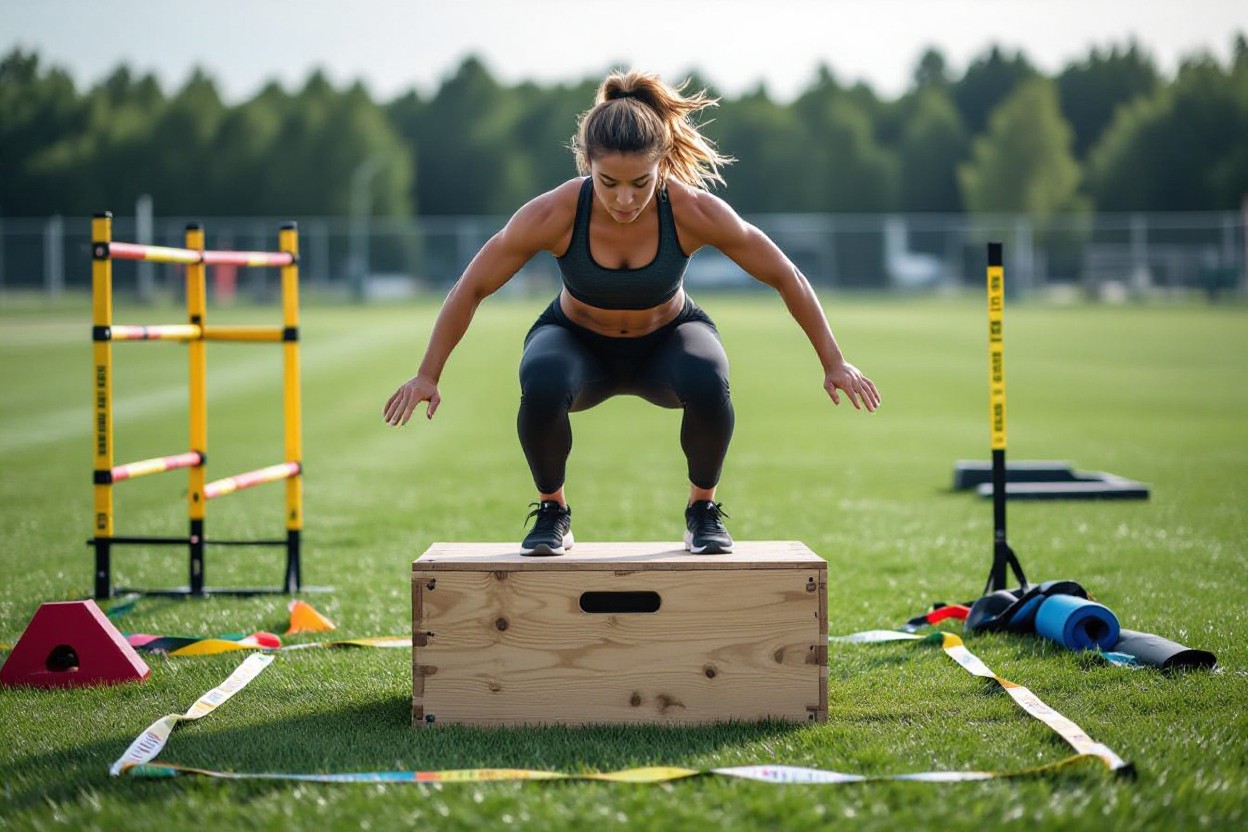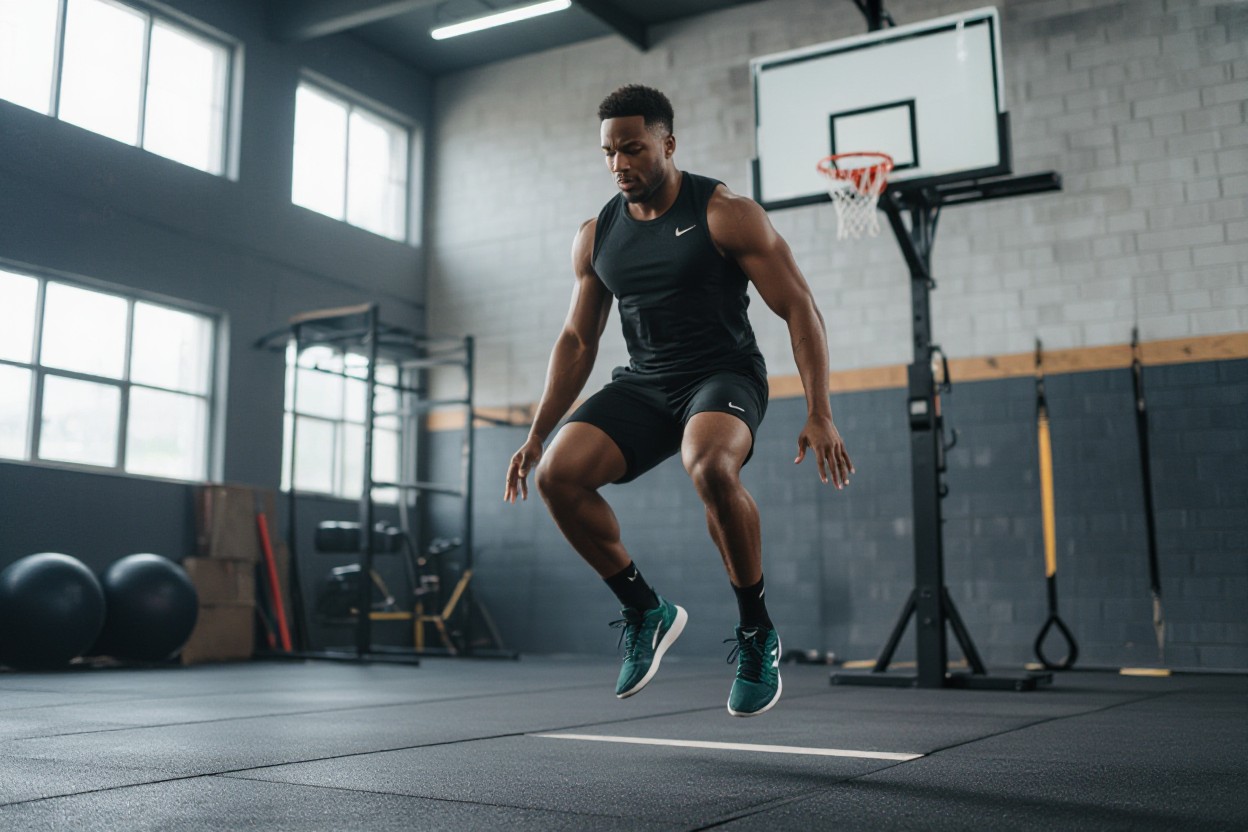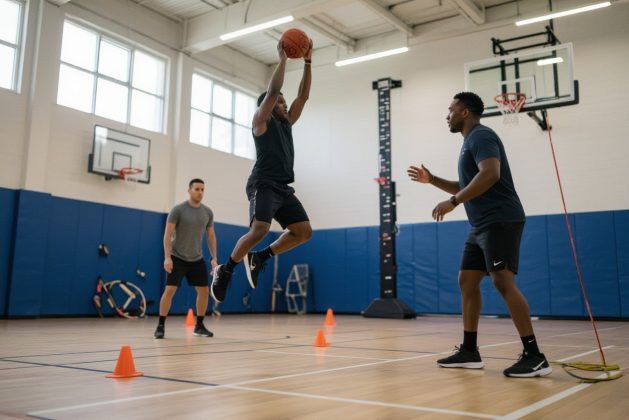Many athletes and fitness enthusiasts strive to increase their vertical leap for better performance in sports like basketball and volleyball. In this guide, I will share with you effective exercises and techniques that have helped me and others safely enhance jump height. These methods focus on building strength, power, and agility while minimizing injury risks. By following these steps consistently, you will see noticeable improvements in your jump ability and overall athleticism.
The Biomechanics of a Higher Jump
Jump height relies heavily on how efficiently your body translates muscular effort into upward movement. Velocity generated by the legs and coordinated timing throughout your body form the backbone of an effective leap. Fine-tuning your joint angles, optimizing force application, and understanding the sequential muscle activation pattern can significantly enhance vertical performance. Proper biomechanical execution reduces energy wastage while increasing the lift-off speed, directly impacting your jump’s height.
Analyzing the Kinetic Chain
The kinetic chain represents the interconnected sequence of joint movements starting from your ankles, progressing through knees and hips, and culminating in your torso and arms. Each link magnifies force transmitted upward, so any inefficiency, like delayed hip extension or stiff ankles, diminishes total force production. Elite jumpers display fluid chain activation—ankle plantarflexion initiates the motion, quickly followed by explosive knee extension and powerful hip thrusts, supported by arm swings that enhance vertical momentum.
Understanding Muscle Engagement and Force Production
Your ability to engage key muscle groups—glutes, quadriceps, hamstrings, and calves—in a rapid, coordinated burst determines how much force you generate at takeoff. Fast-twitch muscle fibers contribute disproportionately to higher jumps, as they contract with greater speed and power. By recruiting these fibers effectively, you maximize force output, propelling your body upward with more velocity than through slow, inefficient muscle activation.
Delving deeper, the gluteus maximus serves as the primary hip extensor, delivering the largest contribution to vertical propulsion, while the quadriceps extend the knee rapidly and powerfully. Hamstrings play a vital role by stabilizing the knee and aiding hip extension, preventing injury under load. Calf muscles amplify push-off force through rapid ankle plantarflexion. Plyometric training enhances the neuromuscular system’s ability to recruit more fast-twitch fibers synchronously, increasing force production and reducing ground contact time, which together elevate jump height noticeably.

Essential Strength Training Exercises
Strength forms the foundation of a higher vertical leap, relying heavily on specific resistance moves that target the right muscle groups. I focus on compound lifts that engage multiple joints to maximize power transfer during jumps. Alongside classic exercises, incorporating variations that challenge explosive strength helps improve fast-twitch muscle fibers crucial for explosive takeoffs. Prioritizing quality over quantity, I emphasize consistent form and progressive overload to safely build the functional strength your body needs to elevate off the ground with more force.
Lower Body Power Moves: Squats and Deadlifts
Squats and deadlifts serve as the cornerstones of lower body strength development, building immense power in your glutes, quads, hamstrings, and calves. I recommend deep squats to fully activate those muscles and deadlifts to enhance posterior chain strength, which is often overlooked but vital for an explosive vertical. Performing these lifts with moderate to heavy weights—typically 70-85% of your one-rep max for 3-5 sets of 5-8 reps—can trigger hypertrophy and neural adaptations that translate directly into heightened jump height.
Core Stability for Increased Power: Planks and Rotational Exercises
Strong core stability acts as the nexus between your lower and upper body, enabling efficient energy transfer during explosive movements like jumping. I rely on planks to build isometric endurance of the deep core muscles, ensuring your torso remains rigid under load. Adding rotational exercises such as Russian twists or cable woodchoppers trains your obliques and transverse abdominals, enhancing your ability to generate and control rotational forces that contribute to jump dynamics and overall balance.
Delving deeper into core training, combining static holds like front and side planks with dynamic rotational moves teaches your neuromuscular system to stabilize and generate torque simultaneously. Research shows athletes who regularly perform integrated core routines can increase ground reaction forces by up to 15%, directly impacting vertical leap power. Including weighted variations, such as planks with arm reaches or medicine ball twists, challenges your core under resistive conditions, accelerating strength gains and improving your in-air control during jumps.
Plyometric Techniques for Explosive Power
Plyometric exercises harness the muscle’s stretch-shortening cycle to produce explosive power, directly enhancing your vertical leap. By rapidly stretching and contracting muscles, these movements train your nervous system to fire faster and with greater force. Implementing plyometrics like bounding and depth jumps can increase your fast-twitch muscle fiber activation, making your jumps not only higher but also more explosive. I’ve personally seen athletes add several inches to their vertical by consistently incorporating plyo drills designed to maximize power output in each leap.
Jump Variations: Box Jumps and Bounding
Box jumps challenge your ability to generate force quickly by requiring you to explode onto a raised platform, improving both leg strength and coordination. Bounding, which involves exaggerated running strides with an emphasis on height and distance, enhances your muscular elasticity and ground contact time. Executed properly, these drills can improve your jumping efficiency by teaching your muscles to recruit energy more dynamically, contributing to noticeable gains in vertical height over time.
Incorporating Depth Jumps for Reactive Strength
Depth jumps are instrumental for developing reactive strength by forcing muscles to rapidly absorb impact before exploding upward. Stepping off a box and immediately jumping upon ground contact utilizes the elastic energy stored during landing, boosting your concentric power output. Typically, even a few sets per week of depth jumps can increase your reactive ability and fast-twitch fiber recruitment, which translates directly into a higher vertical leap.
Expanded a bit, depth jumps involve precise timing and neuromuscular control to maximize their benefits. I recommend starting with a box height between 12 to 24 inches to avoid excessive strain while you build tolerance. The key lies in minimizing ground contact time—aim for less than 0.2 seconds—to fully capitalize on the stretch-shortening cycle. Studies indicate that athletes who consistently perform depth jumps see improvements in jump height of up to 8%. However, improper form or overuse can increase injury risk, so it’s best to progress gradually and focus on quality over quantity when integrating this technique.

The Role of Flexibility and Mobility
Improving your vertical leap isn’t solely about muscle strength or explosive power; enhanced flexibility and joint mobility often dictate how effectively you can channel that force. Tight hips, ankles, or calves can restrict your range of motion and lead to inefficient jumping mechanics, which ultimately caps your vertical height. I’ve observed athletes gaining several inches simply by loosening these restrictive areas, which allows deeper knee bends and a more powerful upward drive. Prioritizing mobility work helps maintain balance and reduces injury risk, ensuring your jump improvements are both significant and sustainable over time.
Stretching Protocols for Optimal Range of Motion
Incorporating targeted static stretches after workouts can significantly enhance muscle elasticity, targeting hamstrings, quadriceps, hip flexors, and the calves—key muscle groups involved in jumping. I include 30-second holds for each stretch, repeated two to three times, focusing on deep lunges and seated hamstring stretches. This combination not only improves joint flexibility but also reduces muscle stiffness and promotes recovery, enabling your legs to generate maximal force during takeoff.
Dynamic Warm-Up Routines to Prepare for Jumping
Before you jump into plyometric drills or heavy squats, engaging in dynamic warm-up movements like leg swings, walking lunges, and ankle circles primes your nervous system and muscles for explosive activity. These exercises elevate core temperature and increase blood flow, improving reaction times and joint lubrication. I find this approach vastly improves technique during high-intensity jumps and reduces the chance of strains—key factors for consistent vertical leap gains.
Expanding on dynamic warm-ups, integrating drills such as high knees, butt kicks, and lateral bounds can simulate the explosive actions of actual jumping, reinforcing neuromuscular coordination. For example, performing 2 sets of 20 meters high knees activates hip flexors and quads, while lateral bounds develop lateral stability—critical for maintaining control during takeoff and landing. These warm-ups optimize muscle elasticity and readiness, effectively bridging flexibility and power work for a holistic vertical jump training routine.

Mental Strategies for Improvement
Mastering a higher vertical leap merges physical readiness with a sharp mental game. Athletes who excel often harness techniques like visualization and strategic goal-setting to keep motivation high and progress steady. Focusing your mind to anticipate success not only primes your body for peak performance but also helps overcome the inevitable challenges and plateaus that surface during training.
Visualization Techniques to Enhance Performance
Visualization works by simulating the act of jumping higher in your mind, activating the same neural pathways as the physical movement itself. I’ve found that picturing yourself executing a perfect, explosive jump—feeling the tension in your calves and the push from your toes—can enhance muscle memory and confidence. Elite jumpers often use vivid mental rehearsal to refine their form and trigger the “fight or flight” adrenaline surge needed for maximum power output.
Setting Incremental Goals for Continuous Growth
Breaking down your vertical leap improvement into small, measurable steps keeps your training adaptable and less overwhelming. Focusing on adding as little as one inch to your jump every two weeks by refining technique or smashing strength benchmarks fuels sustained progress. I recommend creating benchmarks not only for your jump height but also for complementary factors like squat depth or reactive speed to maintain balanced development.
Incremental goals work by shifting your mindset from distant, lofty targets to achievable, immediate objectives. I’ve observed in athletes that celebrating these mini victories sparks dopamine release, which drives motivation more effectively than fixating on large-scale goals. For example, aiming to shave 0.1 seconds off your ground contact time or increasing your box jump height by a few centimeters can solidify confidence and push your limits without mental burnout.
Summing up
So, if you want to jump higher, I recommend focusing on a combination of strength training, plyometric exercises, and proper technique adjustments. By consistently practicing movements like squats, box jumps, and calf raises, you can build the power necessary for a greater vertical leap. Additionally, refining your jumping form and improving your flexibility will enhance your overall performance. I encourage you to stay patient and dedicated, as progress takes time, but with the right approach, you’ll see meaningful improvements in your vertical jump.





Leave a comment